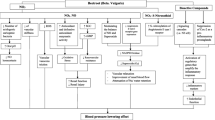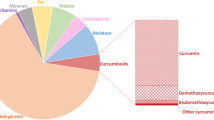Abstract
Cruciferous vegetables are known for antioxidant and anti-carcinogenic effects. In the current study we asked whether dietary broccoli sprouts can protect the heart from ischemia-reperfusion. Rats were fed either control diet (sham and control groups) or a diet mixed with 2% dried broccoli sprouts for 10 days. After 10 days the isolated hearts were subjected to ischemia for 20 min and reperfusion for 2 h, and evaluated for cell death, oxidative damage, and Nrf2-regulated phase 2 enzyme activities. Broccoli sprouts feeding inhibited markers of necrosis (lactate dehydrogenase release) and apoptosis (caspase-3 activity) by 78–86%, and decreased indices of oxidative stress (thiobarbituric acid reactive substances and aconitase inactivation) by 82–116%. While broccoli sprouts increased total glutathione and activities of the phase 2 enzymes glutamate cysteine ligase and quinone reductase in liver, they did not affect these in ischemic-reperfused heart. While the mechanism is not clear, the results show that a relatively short dietary treatment with broccoli sprouts can strongly protect the heart against oxidative stress and cell death caused by ischemia-reperfusion.




Similar content being viewed by others
Abbreviations
- DCIP:
-
2,6-dichloroindophenol
- GCL:
-
glutamate cysteine ligase
- GSH:
-
reduced glutathione
- GSSG:
-
oxidized glutathione
- IR:
-
ischemia-reperfusion
- LDH:
-
lactate dehydrogenase
- PMSF:
-
phenylmethylsulphonyl fluoride
- QR:
-
quinone reductase
- TBARS:
-
thiobarbituric acid reactive substances
References
Nadal-Ginard B, Kajstura J, Leri A, Anversa P (2003) Myocyte death, growth, and regeneration in cardiac hypertrophy and failure. Circ Res 92:139–150
Beltrami AP, Urbanek K, Kajstura J, Yan SM, Finato N, Bussani R, Nadal-Ginard B, Silvestri F, Leri A, Beltrami A, Anversa P (2001) Evidence that human cardiac myocytes divide after myocardial infarction. N Engl J Med 344:1750–1757
Ahuja P, Sdek P, MacLellan WR (2007) Cardiac myocyte cell cycle control in development, disease, and regeneration. Physiol Rev 87:521–544
Murphy E, Steenbergen C (2008) Mechanisms underlying acute protection from cardiac ischemia-reperfusion injury. Physiol Rev 88:581–609
Dhalla NS, Elmoselhi AB, Hata T, Makino N (2000) Status of myocardial antioxidants in ischemia-reperfusion injury. Cardiovasc Res 47:446–456
Tanaka M, Mokhtari GK, Terry RD, Balsam LB, Lee KH, Kofidis T, Tsao PS, Robbins RC (2004) Overexpression of human copper/zinc superoxide dismutase (SOD1) suppresses ischemia-reperfusion injury and subsequent development of graft coronary artery disease in murine cardiac grafts. Circulation 110:II200–II206
Chen SY, Hsiao G, Hwang HR, Cheng PY, Lee YM (2006) Tetramethylpyrazine induces heme oxygenase-1 expression and attenuates myocardial ischemia/reperfusion injury in rats. J Biomed Sci 13:731–740
Chen XL, Kunsch C (2004) Induction of cytoprotective genes through Nrf2/antioxidant response element pathway: a new therapeutic approach for the treatment of inflammatory diseases. Curr Pharm Des 10:879–891
Juurlink BH (2001) Therapeutic potential of dietary phase 2 enzyme inducers in ameliorating diseases that have an underlying inflammatory component. Can J Physiol Pharmacol 79:266–282
Keck AS, Finley JW (2004) Cruciferous vegetables: cancer protective mechanisms of glucosinolate hydrolysis products and selenium. Integr Cancer Ther 3:5–12
Fahey JW, Zhang Y, Talalay P (1997) Broccoli sprouts: an exceptionally rich source of inducers of enzymes that protect against chemical carcinogens. Proc Natl Acad Sci USA 94:10367–10372
Liu AG, Volker SE, Jeffery EH, Erdman JW (2009) Feeding tomato and broccoli powders enriched with bioactives improves bioactivity markers in rats. J Agric Food Chem 57:7304–7310
Pereira FM, Rosa E, Fahey JW, Stephenson KK, Carvalho R, Aires A (2002) Influence of temperature and ontogeny on the levels of glucosinolates in broccoli (Brassica oleracea Var. italica) sprouts and their effect on the induction of mammalian phase 2 enzymes. J Agric Food Chem 50:6239–6244
Moreno DA, Carvajal M, López-Berenguer C, García-Viguera C (2006) Chemical and biological characterisation of nutraceutical compounds of broccoli. J Pharm Biomed Anal 41:1508–1522
Vasanthi HR, Mukherjee S, Das DK (2009) Potential health benefits of broccoli—a chemico-biological overview. Mini Rev Med Chem 9:749–759
Whanger PD (2002) Selenocompounds in plants and animals and their biological significance. J Am Coll Nutr 21:223–232
Finley JW (2003) Reduction of cancer risk by consumption of selenium-enriched plants: enrichment of broccoli with selenium increases the anticarcinogenic properties of broccoli. J Med Food 6:19–26
Rayman MP, Infante HG, Sargent M (2008) Food-chain selenium and human health: spotlight on speciation. Br J Nutr 100:238–253
Keck AS, Finley JW (2004) Cruciferous vegetables: cancer protective mechanisms of glucosinolate hydrolysis products and selenium. Integr Cancer Ther 3:5–12
Ribaya-Mercado JD, Blumberg JB (2004) Lutein and zeaxanthin and their potential roles in disease prevention. J Am Coll Nutr 23:567S–587S
Calvo MM (2005) Lutein: a valuable ingredient of fruit and vegetables. Crit Rev Food Sci Nutr 45:671–696
Riso P, Brusamolino A, Moro M, Porrini M (2009) Absorption of bioactive compounds from steamed broccoli and their effect on plasma glutathione S-transferase activity. Int J Food Sci Nutr 60(Suppl 1):56–71
Granado F, Olmedilla B, Herrero C, Pérez-Sacristán B, Blanco I, Blázquez S (2006) Bioavailability of carotenoids and tocopherols from broccoli: in vivo and in vitro assessment. Exp Biol Med (Maywood) 231:1733–1738
Eberhardt MV, Kobira K, Keck AS, Juvik JA, Jeffery EH (2005) Correlation analyses of phytochemical composition, chemical, and cellular measures of antioxidant activity of broccoli (Brassica oleracea L. Var. italica). J Agric Food Chem 53:7421–7431
Cho EJ, Lee YA, Yoo HH, Yokozawa T (2006) Protective effects of broccoli (Brassica oleracea) against oxidative damage in vitro and in vivo. J Nutr Sci Vitaminol (Tokyo) 52:437–444
Chu YF, Sun J, Wu X, Liu RH (2002) Antioxidant and antiproliferative activities of common vegetables. J Agric Food Chem 50:6910–6916
Vinson JA, Hao Y, Su X, Zubik L (1998) Phenol antioxidant quantity and quality in foods: vegetables. J Agric Food Chem 46:3630–3634
Keck AS, Finley JW (2006) Aqueous extracts of selenium-fertilized broccoli increase selenoprotein activity and inhibit DNA single-strand breaks, but decrease the activity of quinone reductase in Hepa 1c1c7 cells. Food Chem Toxicol 44:695–703
Plumb GW, Lambert N, Chambers SJ, Wanigatunga S, Heaney RK, Plumb JA, Aruoma OI, Halliwell B, Miller NJ, Williamson G (1996) Are whole extracts and purified glucosinolates from cruciferous vegetables antioxidants? Free Radic Res 25:75–86
Zhu CY, Loft S (2003) Effect of chemopreventive compounds from Brassica vegetables on NAD(P)H:quinone reductase and induction of DNA strand breaks in murine hepa1c1c7 cells. Food Chem Toxicol 41:455–462
Gill CI, Haldar S, Porter S, Matthews S, Sullivan S, Coulter J, McGlynn H, Rowland I (2004) The effect of cruciferous and leguminous sprouts on genotoxicity, in vitro and in vivo. Cancer Epidemiol Biomarkers Prev 13:1199–1205
Hintze KJ, Keck AS, Finley JW, Jeffery EH (2003) Induction of hepatic thioredoxin reductase activity by sulforaphane, both in Hepa1c1c7 cells and in male Fisher 344 rats. J Nutr Biochem 14:173–179
Wu L, Noyan Ashraf MH, Facci M, Wang R, Paterson PG, Ferrie A, Juurlink BHJ (2004) Dietary approach to attenuate oxidative stress, hypertension, and inflammation in the cardiovascular system. Proc Natl Acad Sci USA 101:7094–7099
Modun D, Music I, Katalinic V, Salamunic I, Boban M (2003) Comparison of protective effects of catechin applied in vitro and in vivo on ischemia-reperfusion injury in the isolated rat hearts. Croat Med J 44:690–696
Townsend PA, Scarabelli TM, Pasini E, Gitti G, Menegazzi M, Suzuki H, Knight RA, Latchman DS, Stephanou A (2004) Epigallocatechin-3-gallate inhibits STAT-1 activation and protects cardiac myocytes from ischemia/reperfusion-induced apoptosis. FASEB J 18:1621–1623
Zor T, Selinger Z (1996) Linearization of the Bradford protein assay increases its sensitivity: theoretical and experimental studies. Anal Biochem 236:302–308
Kornberg A (1955) Lactate dehydrogenase of muscle. Methods Enzymol 1:441–454
Masini E, Pierpaoli S, Marzocca C, Mannaioni PF (2003) Protective effects of a plant histaminase in myocardial ischaemia and reperfusion injury in vivo. Biochem Biophys Res Commun 309:432–439
Ohkawa H, Ohishi N, Yagi K (1979) Assay for lipid peroxides in animal tissues by thiobarbituric acid reaction. Anal Biochem 95:351–358
Takemoto M, Node K, Nakagami H, Liao Y, Grimm M, Takemoto Y, Kitakaze M, Liao JK (2001) Statins as antioxidant therapy for preventing cardiac myocyte hypertrophy. J Clin Invest 108:1429–1437
Tietze F (1969) Enzymic method for quantitative determination of nanogram amounts of total and oxidized glutathione: applications to mammalian blood and other tissues. Anal Biochem 27:502–522
White CC, Viernes H, Krejsa CM, Botta D, Kavanagh TJ (2003) Fluorescence-based microtiter plate assay for glutamate-cysteine ligase activity. Anal Biochem 318:175–180
Spencer CB, Rifkind AB (1990) NAD(P)H: quinone oxidoreductase (DT-diaphorase) in chick embryo liver. Comparison to activity in rat and guinea pig liver and differences in co-induction with 7-ethoxyresorufin deethylase by 2, 3, 7, 8-tetrachlorodibenzo-p-dioxin. Biochem Pharmacol 39:327–335
Ferrari R, Ceconi C, Curello S, Alfieri O, Visioli O (1993) Myocardial damage during ischaemia and reperfusion. Eur Heart J 14(Suppl G):25–30
Mukherjee S, Gangopadhyay H, Das DK (2008) Broccoli: a unique vegetable that protects mammalian hearts through the redox cycling of the thioredoxin superfamily. J Agric Food Chem 56:609–617
Yoon HY, Kang NI, Lee HK, Jang KY, Park JW, Park BH (2008) Sulforaphane protects kidneys against ischemia-reperfusion injury through induction of the Nrf2-dependent phase 2 enzyme. Biochem Pharmacol 75:2214–2223
Skrzypiec-Spring M, Grotthus B, Szelag A, Schulz R (2007) Isolated heart perfusion according to Langendorff-still viable in the new millennium. J Pharmacol Toxicol Methods 55:113–126
Acknowledgements
This work was supported by grants from the College of Pharmacy and Nutrition, the Canadian Institutes of Health Research (CIHR), and the Natural Sciences and Engineering Research Council (NSERC). M. Akhlaghi was supported by a PhD fellowship from the Iranian Ministry of Health and Medical Education. Thanks to Dr. Bernhard H. Juurlink and Dr. Paul Lee for the broccoli seeds and helpful advice.
Author information
Authors and Affiliations
Corresponding author
Rights and permissions
About this article
Cite this article
Akhlaghi, M., Bandy, B. Dietary Broccoli Sprouts Protect Against Myocardial Oxidative Damage and Cell Death During Ischemia-Reperfusion. Plant Foods Hum Nutr 65, 193–199 (2010). https://doi.org/10.1007/s11130-010-0182-4
Published:
Issue Date:
DOI: https://doi.org/10.1007/s11130-010-0182-4




